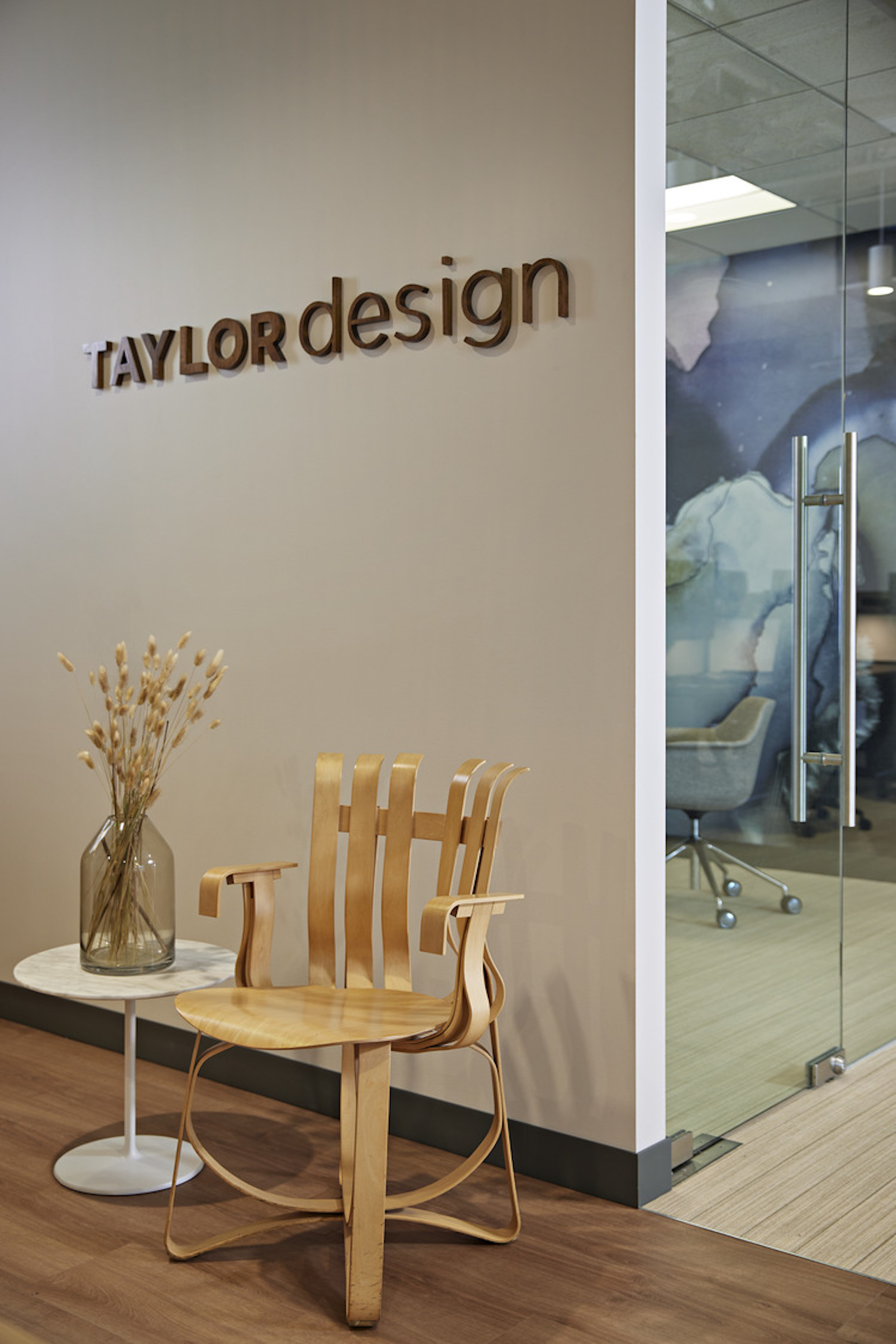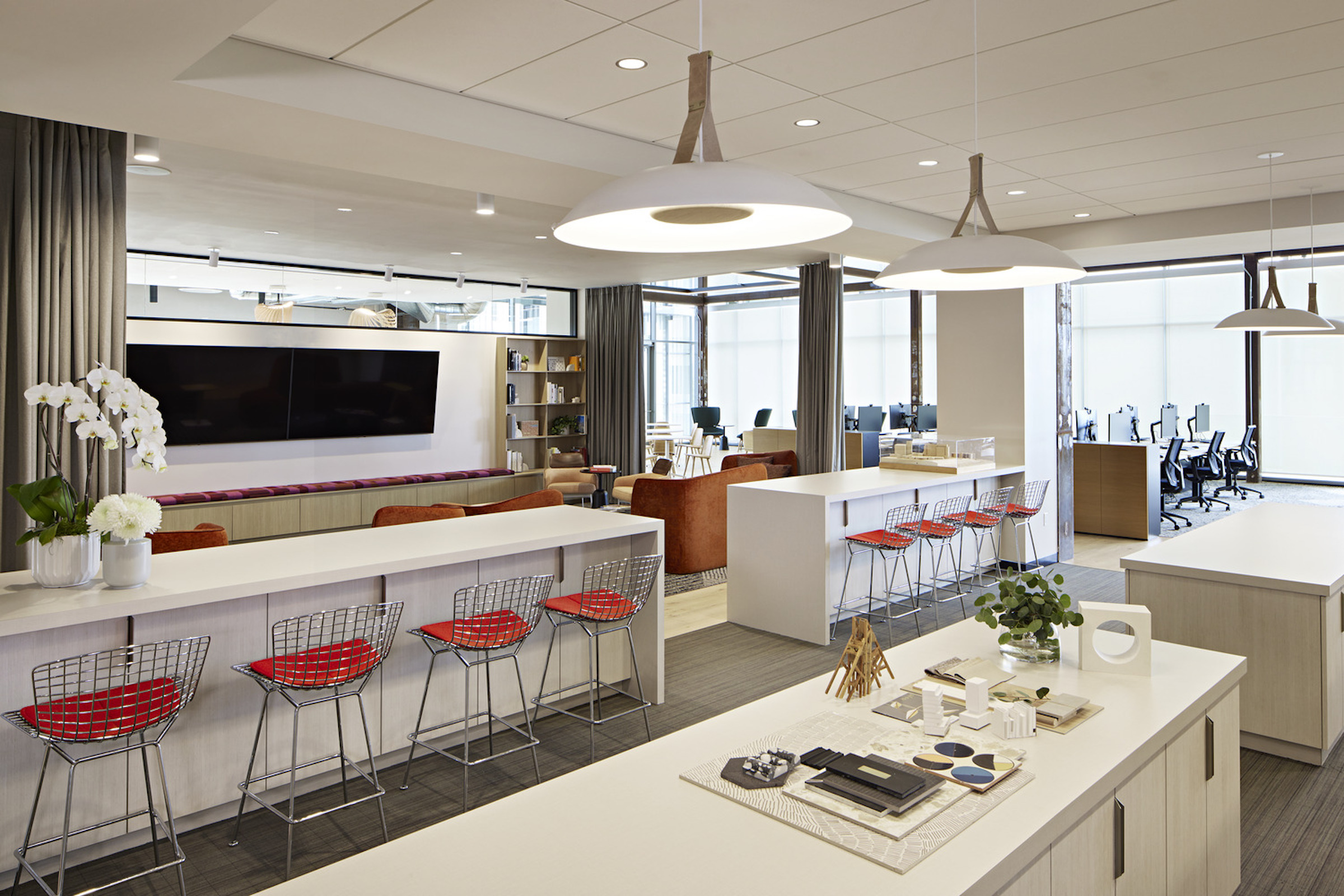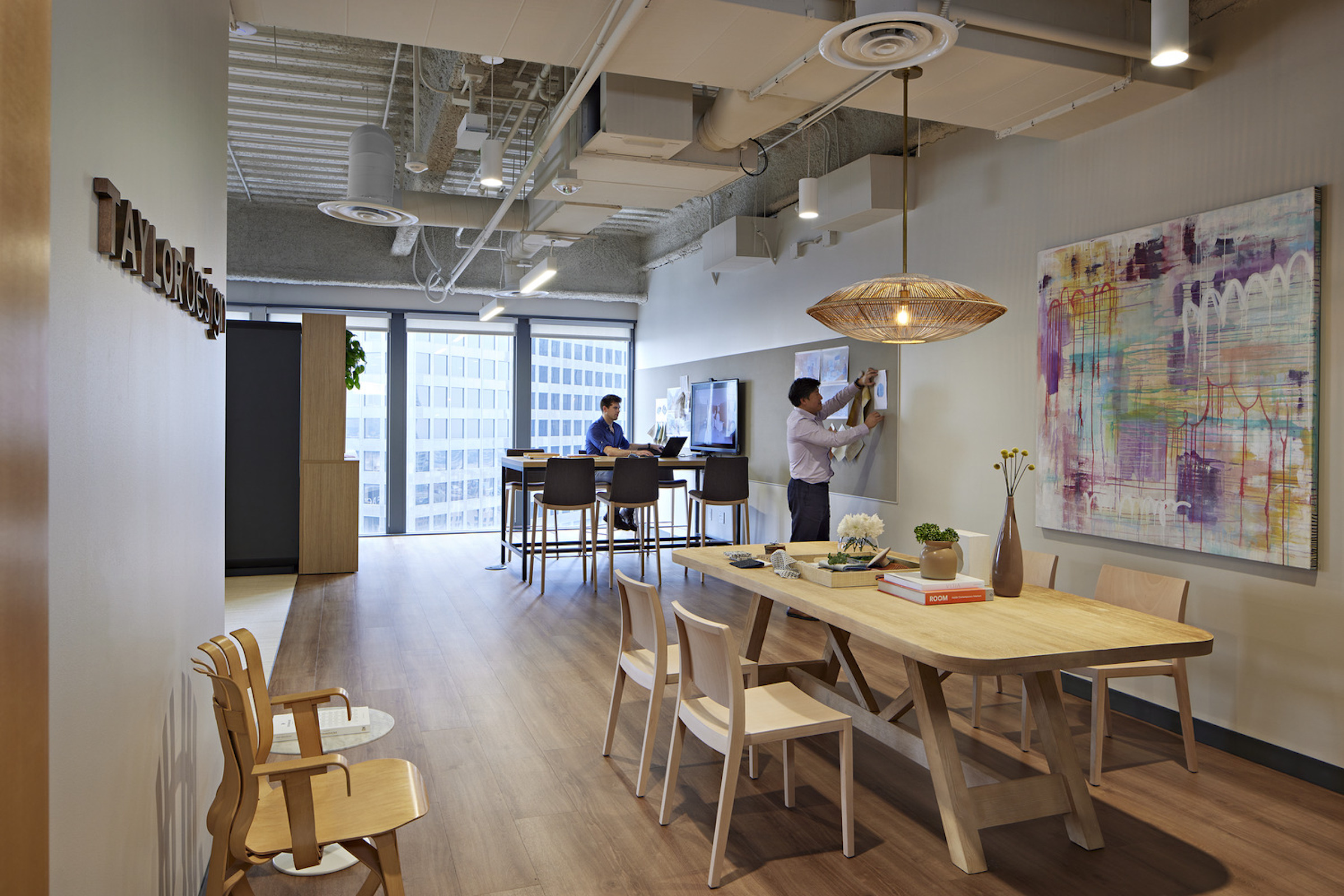Companies create design standards for many reasons, including brand recognition and to simplify the procurement process. These standards provide explicit direction for the way the company uses art, lighting, space layouts, furniture, fabrics, security, technology and many other components of the design process.
Design standards can serve another purpose — to help the design team understand how much of the project must “stay within the lines” and how much is subject to creative interpretation. Because this ratio is often about 70%-30%, we use the term “Find Your 30” at Taylor Design.
This is an approximation, of course. We settled on “Find Your 30,” but every organization carries different standards, priorities and brand-driven requirements into a design project. For some companies, the ratio is 90%-10%; for others it may be closer to 50%-50%. When we designed our new Sacramento, Los Angeles and Orange County offices, we ensured that our breakdown was 70%-30%.
What does “Find Your 30” mean?
It is as important to identify your ideal ratio as it is to decide to create design standards in the first place. This informs the designer exactly how much freedom they have to use their skill and creativity to celebrate a unique culture from location to location.
Finding Your 30 gives each office a sense of autonomy, and it allows for bigger and broader concepts that emphasize distinctive cultural, historic or other similar attributes. While the “70” holds true to the company’s requirements for branding, company colors, furniture and materials, the “30” affords the designer – in collaboration with the owner and their team – the opportunity to deviate from the standards and introduce artwork, fittings, color accents and other elements that communicate a sense of community and ownership. This freer expression is often used to highlight cultural and historic aspects of the physical location, but can also reference other qualities, such as the firm’s mission, history, signature work or founding partners.
Why is this important?
When a design team goes into a project fully aware of what is flexible and what is not, it saves time, which saves money. Also, when you fail to define the ratio – to Find Your 30 – you lose an opportunity to simultaneously illustrate brand consistency with a uniqueness of place. This is particularly true in a renovation setting, where the goal is to seamlessly marry existing finishes with newly created standards in a complementary way. This lack of direction can lead to decisions being made on the fly, often badly. It invites confusion, crushes momentum and can cast a pall over the entire project.
The challenge and opportunity
Taylor Design approached its latest office space updates with a firm commitment to allowing each office 30% choice to promote the uniqueness of their space. Like many multiple-office firms, we encountered both lease extensions and entirely new locations, which added to the challenge. As we set about creating spaces that represent the singular Taylor Design Brand, while giving each location room to design a thoughtful story, we asked ourselves a number of questions:

What do we want clients and employees to feel and think about when they are in the space? As both designers ourselves and occupants of the space, we know that the answer lies in telling a lasting narrative about who Taylor Design is, what we stand for, and how the occupants of this particular office are firmly in the Taylor Design fold, yet also representative of the characteristics of the locality. The “30” helps to define the entire experience.
What standards should we employ? Standards in this context offer two parallel benefits: they help accentuate the brand (e.g., values, mission) and illustrate the culture (e.g., what makes us different). The goal is to craft a meaningful story within our spaces that keeps our mission front and center — “Design that Empowers People” — while sharing who we are as a distinctive community of designers.
Should we concentrate the “30” in a single part of the office or spread it throughout? In some cases, but especially when the ratio is 90%-10%, the creative component is limited to one space – often the lobby. We decided quickly that we wanted to weave our 30% throughout the space. One of the ways we decided to represent the uniqueness of place within the context of Taylor Design was to ask our founder, Linda Taylor, to use her remarkable artistic talent to provide paintings that are specific to each location. As a result, her artwork graces multiple locations in each office. Also, with the full 30% to work with, we had sufficient room to convey our story in multiple areas, including deep into the space to help emphasize brand identity to visitors and to our staff.
Which design elements fall in both the 70% and the 30%? The theory of “Find Your 30” doesn’t require every design component to fall within one camp or the other; it can sometimes be in both. For example, in our office renovations, employees shared their personal inspirations with Linda Taylor to help stimulate the original artwork of each location. Commissioning Linda to contribute paintings falls in the 70% standard – each office will have a piece of her art. However, because each piece reflects the unique inspiration of the employees in the office, it also falls within the 30%. The same holds true for engaging with local community artists. Each office location worked with and commissioned an original piece of art from a community artist. As with our founder’s art, the community artist’s work is part of both the 70% and the 30%.

How should we get where we want to be? We held workshops featuring exercises that helped define the challenge of each space and seek solutions within the framework of Find Your 30. We used 70%-30% as an aid to determine whether a challenge or solution belonged to the rigid design standards of the former, or the freedom of expression in the latter. For example, we specified material, including natural grass and a graphic wallcovering, explicitly to illustrate to our clients’ how to introduce biophilia in sophisticated ways.
At the heart of it, Find Your 30 is about the experience of a place. Experience is defined by the culture – it’s the feeling you carry with you after you leave. It is the layering of information and how it eventually comes together as a cohesive story. It is about the things that make a space memorable. So when a design team adapts design standards appropriately and insightfully, within the context of the 70%-30% rule, the result is a space that supports and enhances your organization’s message, mission and values.
About the Author
Stephanie L’Estrange is Principal/Director of Interior Design for Taylor Design, a multidiscipline design firm with five offices in California.
Related Stories
Office Buildings | Mar 5, 2015
Goettsch Partners unveils plans for dual office towers in Warsaw
The Mennica Legacy Tower development is divided into a 35-story tower located on the south east side of the site and a 10-story building on the west side.
High-rise Construction | Mar 4, 2015
Must see: Egypt planning 656-foot pyramid skyscraper in Cairo
Zayed Crystal Spark Tower will stand 200 meters tall and will be just a short distance from the pyramids of Giza.
Transit Facilities | Mar 4, 2015
5+design looks to mountains for Chinese transport hub design
The complex, Diamond Hill, will feature sloping rooflines and a mountain-like silhouette inspired by traditional Chinese landscape paintings.
Office Buildings | Mar 3, 2015
Former DuPont lab to be converted into business incubator near UPenn campus
The new Pennovation Center will provide collaborative and research spaces for educators, scientists, students, and the private sector.
Office Buildings | Mar 1, 2015
Google unveils dramatic tent-like, modular-focused plan for corporate HQ
The master plan by Bjarke Ingels and Thomas Heatherwick will wrap highly flexible office blocks in soaring translucent canopies.
Office Buildings | Feb 26, 2015
Using active design techniques to strengthen the corporate workplace and enhance employee wellness
The new Lentz Public Health Center in Nashville, Tenn., serves as a model of how those progressive and healthy changes can be made.
Sponsored | Shopping Centers | Feb 26, 2015
A color-changing gateway for Altara Center
Valspar works with developers to complete a multicolored shopping center façade in Honduras.
Office Buildings | Feb 23, 2015
The importance of quiet and the consequences of distraction
Recent work style studies show that the average knowledge worker spends 25-35% of their time doing heads-down focused work. Once thrown off track, it can take some 23 minutes for a worker to return to the original task.
Codes and Standards | Feb 18, 2015
USGBC concerned about developers using LEED registration in marketing
LEED administrators are concerned about a small group of developers or project owners who tout their projects as “LEED pre-certified” and then fail to follow through with certification.
Office Buildings | Feb 18, 2015
Commercial real estate developers optimistic, but concerned about taxes, jobs outlook
The outlook for the commercial real estate industry remains strong despite growing concerns over sluggish job creation and higher taxes, according to a new survey of commercial real estate professionals by NAIOP.














